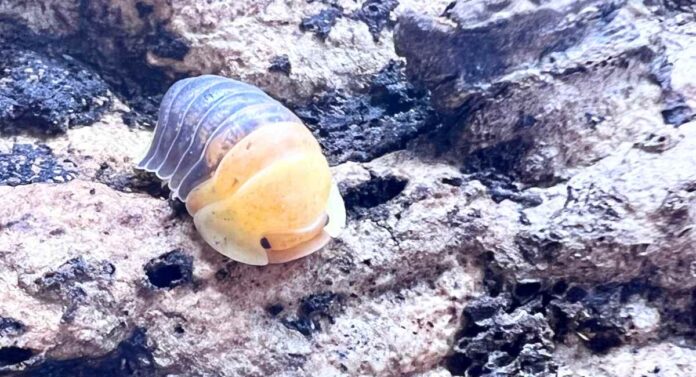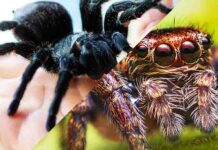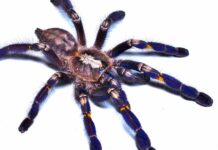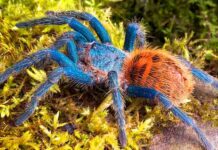I have kept isopods as pets for a couple of years now. And it started accidentally, when I bought a bunch to populate my bioactive reptile tanks as cleaning custodians! I quickly realised how unique and entertaining they were. So much so that I wanted to keep some separately, where I could admire them. They come in a huge range of types from the flat Porcellio, to the ball-making Armadillidium and cute-faced Cubaris sp! I’ve got some of each variety, and the different species have their own distinct habits and even personalities.
Isopods make incredible pets for almost anyone, even if they aren’t as substantial as other exotic pets. They take up a tiny amount of space, can be very inexpensive to buy and are never going to bite you. There are also a huge variety of types, and you can make them really fun enclosures to explore. They can even eat tiny bits of your food scraps, or finger nails if that’s your sort of thing!
Contents
Having isopods as pets has surprised the largest number of visitors to my house. Which is funny, because you’d think large frogs and tiny lizards would raise a lot more eyebrows. But most people don’t think of roly pollies, pillbugs or woodlice as pets. They are just one of those bugs you see when you’re weeding the flower beds, right? Wrong!
My Pet Isopods
I have an awful lot of animals, but in the last few years I’ve become fully immersed in the rather unusual world of bioactive enclosures. All of my reptiles and amphibians are set up in living, humidity and temperature controlled terrariums. And those things aren’t just pretty, they are also pretty much self cleaning. And that is all possible due to a combination of plants and custodian creatures, including springtails and the gorgeous tiny isopods.
I initially got a bunch of dairy cow isopods to help my tanks stay clean and fresh. They bred quickly, populated the tanks well and were totally adorable. I have always loved woodlice, but these were next level critters with their blotchy pattern and surprisingly confident personalities.
Types of Isopod
There are an awful lot of different types of isopod, but the three most common groups you’ll find online and in pet stores are Armadillidium, Porcellio and the recently discovered Cubaris.
Armadillidium
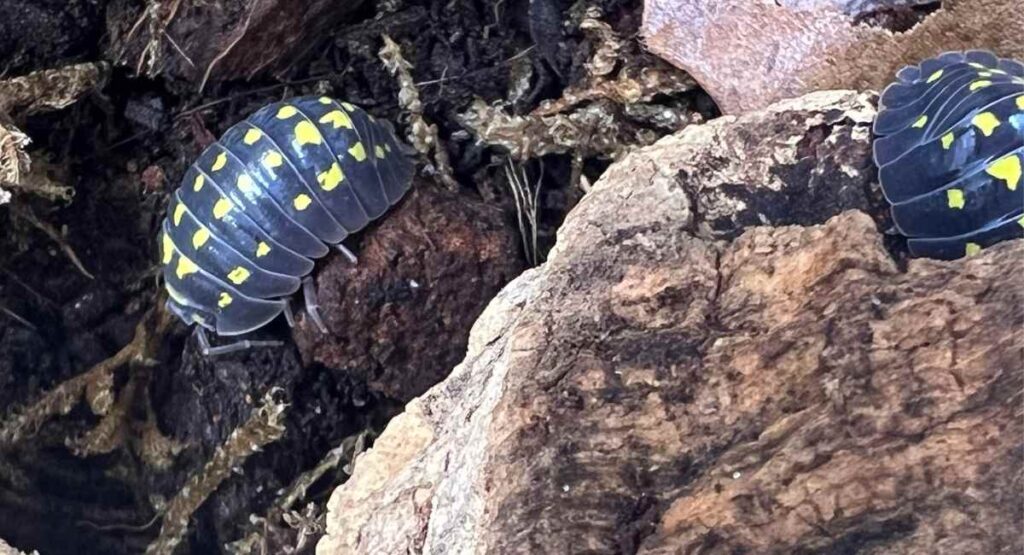
These are what you might think of as roly polies. The woodlice that curl themselves up into a ball defensively. This trait isn’t just cute, it protects them from predators. I also personally feel it’s likely the reason why they aren’t as skittish as the other types. My Magic Potion and Clown Isopods are both varieties of Armadillidium (Vulare and Klugi respectively, for those who are interested!) and these colorful cuties are my most confident isopods by a long way.
Porcellio
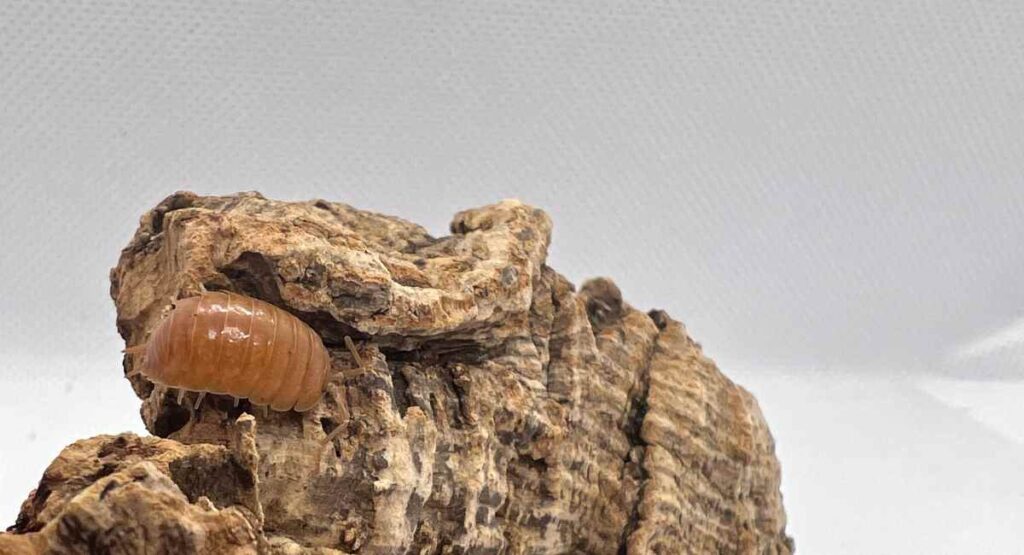
My first ever isopods were Dairy Cows, a splattered patterned variety of Porcellio. They look flatter and less rounded than the Armadillidium, and they are not able to roll into a ball in the same way. They are speedy little critters around humans, but amazingly prolific breeders.
Because of this they are a common way to populate bioactive terrariums, and make fun breeding projects. But you can end up with an awful lot of them very quickly, and due to the ease of mating you won’t get people falling over themselves to buy your babies.
Cubaris Sp
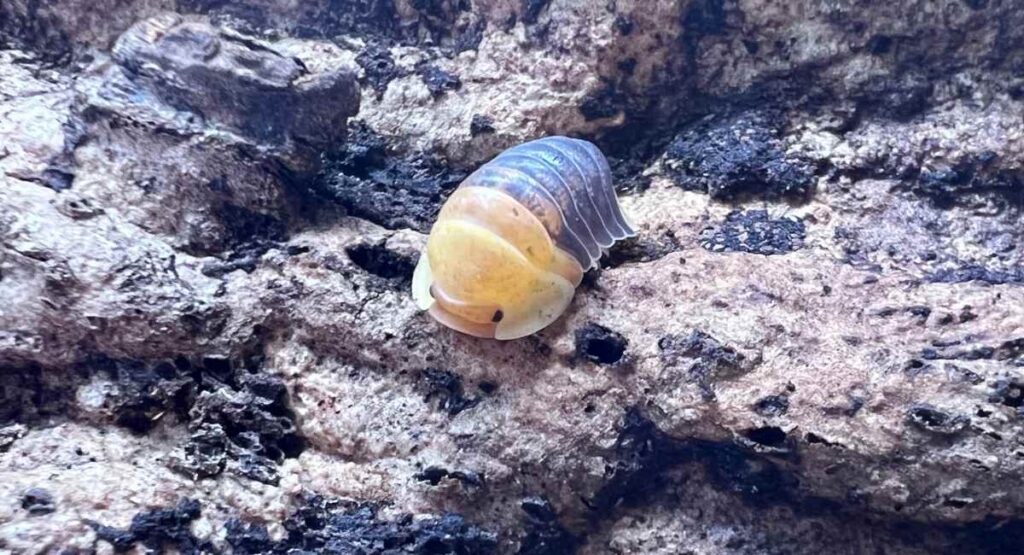
The hot topic of the isopod world, Cubaris sp is a bit of a rockstar. These arch domed isopods have little kicked up troughs around their edges that give them a really unique look. Their eyes are defined black dots and their bold patterns have been capturing hearts since their discovery just a few years ago.
The pinnacle of the Cubaris world at the moment is the sought after Rubber Ducky. They are orange and grey striped, and undeniably adorable.
This species are considered hard to keep and breed, which is why they cost so much money to buy. I’ve been lucky enough to be given a set of six Rubber Duckies by a reptile shop owner friend, but I also have some Panda Kings that I ordered online. The same variety just in black and white markings, and whom I’ve managed to keep happy and breeding for a while now. So my hopes for propagating the Rubber Duckies are high!
Cubaris need higher humidity than their Armadillidium and Porcellio friends, so I put a higher proportion of sphagnum moss in the enclosure and spray them down more enthusiastically once a day.
Which Is The Best Pet Isopod?
The best isopods as pets depends on what you want from your little critters. Looking for something rare to make a conversation piece, go with Cubaris sp. Love confidence and bright patterns? Then you can’t go wrong with Armadillidium. And if you are looking for something that’s fast, fun and easy to breed then Porcellio are your group.
Personally my favorites are the cute Cubaris sp Panda Kings, my relatively new enormous Titan Porcellio and the classic clow Aramdillidium. So one of each isopod type!
Basic Isopod Set Up
Small totes with some ventilation are the most popular way of keeping isopods, and mine are in a combination of these and tailor made feeder tanks. Just make sure that they have ventilation, but that the holes in it are not big enough for tiny baby isopods to escape through.
Put a couple of inches deep of soil in the bottom, then what I do is place cork bark in one half and a blotch of sphagnum moss on the other side. Do think that you need a slightly different humidity for Cubaris, in my opinion. I’ve found they do best if nearly half the tank is moss.
Feeding Isopods As Pets
Dried leaves make up the majority of most pet isopods diets, along with bark that will remain in their enclosure indefinitely. I also around once a week offer my pet isopods a tiny flake of fish food, some of our leftover vegetables, a dab or gecko diet or piece of cuttlefish.
Daily Care
Depending on how big your tub is and how much moss you’re using, you’ll need to spray down the tank between once a day and once a week. What to look out for is that the moss feels slightly damp to the touch. My spiderling tubs that hold isopods I spray down very lightly once a day, the ones in the less well ventilated totes are fine with just a spritz once a week.

